One characteristic of the piano that has always appealed to me was the fact that it can be the entire orchestra. It can be the drummer, bass player, guitar/piano/horn section and the vocalist. But if you don't need to be the entire orchestra, it can be a very good rhythm section as well.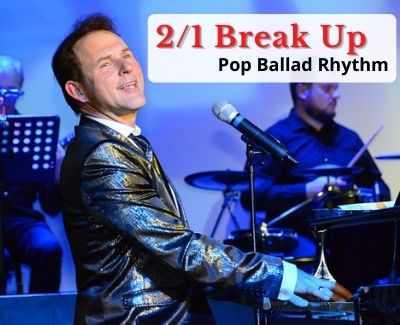
In other words, another instrument can take over the parts such as the melody. This is of course is exactly the case when there's a singer involved. The piano is the rhythm section. This doesn't have to be complex to compliment a singer.
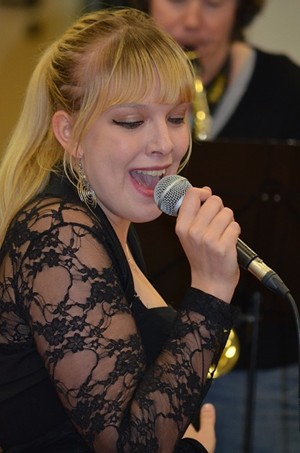 In this article, I want to share with you a simple pop ballad rhythm on the piano that pros use and the best thing is that it's simple and gets the job done comping (accompanying) a singer.
In this article, I want to share with you a simple pop ballad rhythm on the piano that pros use and the best thing is that it's simple and gets the job done comping (accompanying) a singer.
First, we'll look at the Keyshots for our simple pop ballad rhythm and then we'll look at some Noteshots to show you how to play them.
Most of the chords are pretty standard, but you'll see that we'll have a few rich chords to make our simple pop ballad more interesting.
Our starting chord is G Major. The voicing is quite simple but we'll add the root in the left hand. Next, we have A minor 7 with the root in the bass only. If you're familiar with upper structure chords, you'll recognize that it's just a C Major chord over an A. But if you don't, that's fine. Our Keyshot makes it simple.
Next, we have A minor 7 with the root in the bass only. If you're familiar with upper structure chords, you'll recognize that it's just a C Major chord over an A. But if you don't, that's fine. Our Keyshot makes it simple.
We're then moving up to a B minor 7 chord. It has the root in the bass just like our last chord. Although the right hand voicing is different. On to C Major it's in 2nd inversion with the root doubled in the bass.
On to C Major it's in 2nd inversion with the root doubled in the bass.
C Major again but this time it has a D in the bass. This is really a C add 2 chord. (Some musicians would say C9 and that's ok too).
Back to G again. Only this time it's in 2nd inversion.
Moving a whole step down from G to F Major with the same voicing. Then we have E minor 7. Just as with A minor 7, this chord can also be viewed as an upper structure chord. Do you recognize that it's simply a G Major chord over an E?
Then we have E minor 7. Just as with A minor 7, this chord can also be viewed as an upper structure chord. Do you recognize that it's simply a G Major chord over an E?
Now we have an A minor 11 chord. A simple A minor chord is good but when you add the 11th (also known as the 4th tone), it's a very satisfying way to dress up a minor chord. Then we move to a C sus 2 chord. However it's a slash chord which has a D in the bass.
Then we move to a C sus 2 chord. However it's a slash chord which has a D in the bass.
Rounding out our simple pop ballad rhythm is G Major. Even though it can be played in any inversion, 1st inversion has the root on top which gives our piece of music resolution so that's the chosen voicing here. It's extremely helpful to know chords and voicings. This helps you to focus on other aspects of music instead of struggling to understand and play them.
It's extremely helpful to know chords and voicings. This helps you to focus on other aspects of music instead of struggling to understand and play them.
Now onto our simple pop ballad rhythm. We're going to be playing what's known as a 2-1 break-up. In other words, we're breaking up the right hand chords by playing 2 notes and then 1 note.
Our left hand will be playing the bass notes which is the root most of the time with the exception of the two slash chords that we have.
Here's the 2-1 break up rhythm with a G Major chord as an example.
Play the 3rd and 5th tones first and then the root as shown in the Noteshot. You'll play each chord for four beats. When you comfortably get this under hand, move into playing the rest of the chords in our simple pop ballad rhythm.
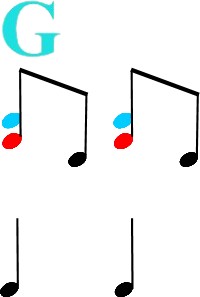
Here we go!
Keyshots & Noteshots

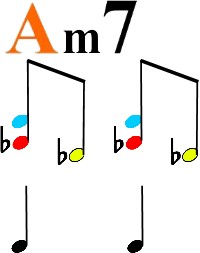

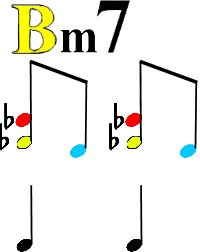

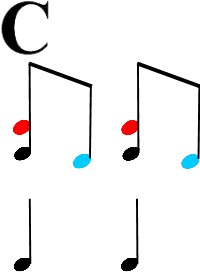

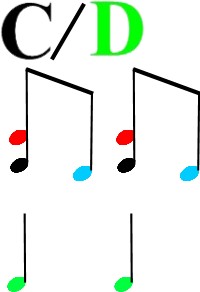

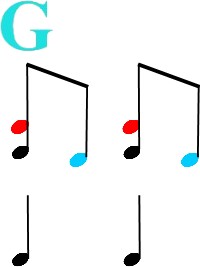

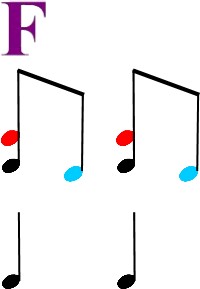

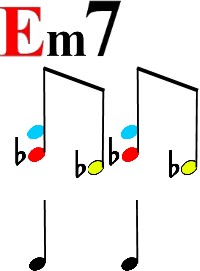

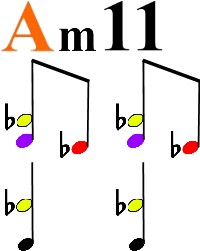

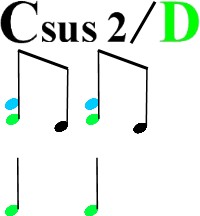

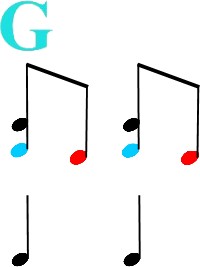

As you can hear, we have a simple but professional sounding arrangement that you can use on thousands of songs that are in a ballad style. And if you wish to have it on your score stand for further study, I have a link here for you to receive it free as a digital copy.
You're not limited to the chords or voicings I've shown you here, so be creative playing this rhythm.
Until next time, Go Play!
Greg Lee
Latest posts by Greg Lee (see all)
- What is a minor/Major 7 Chord? - October 26, 2023
- 7 Chord Substitutions that Professionals Use - October 19, 2023
- 5 Simple Chord Tricks to Sound Amazing - October 5, 2023



